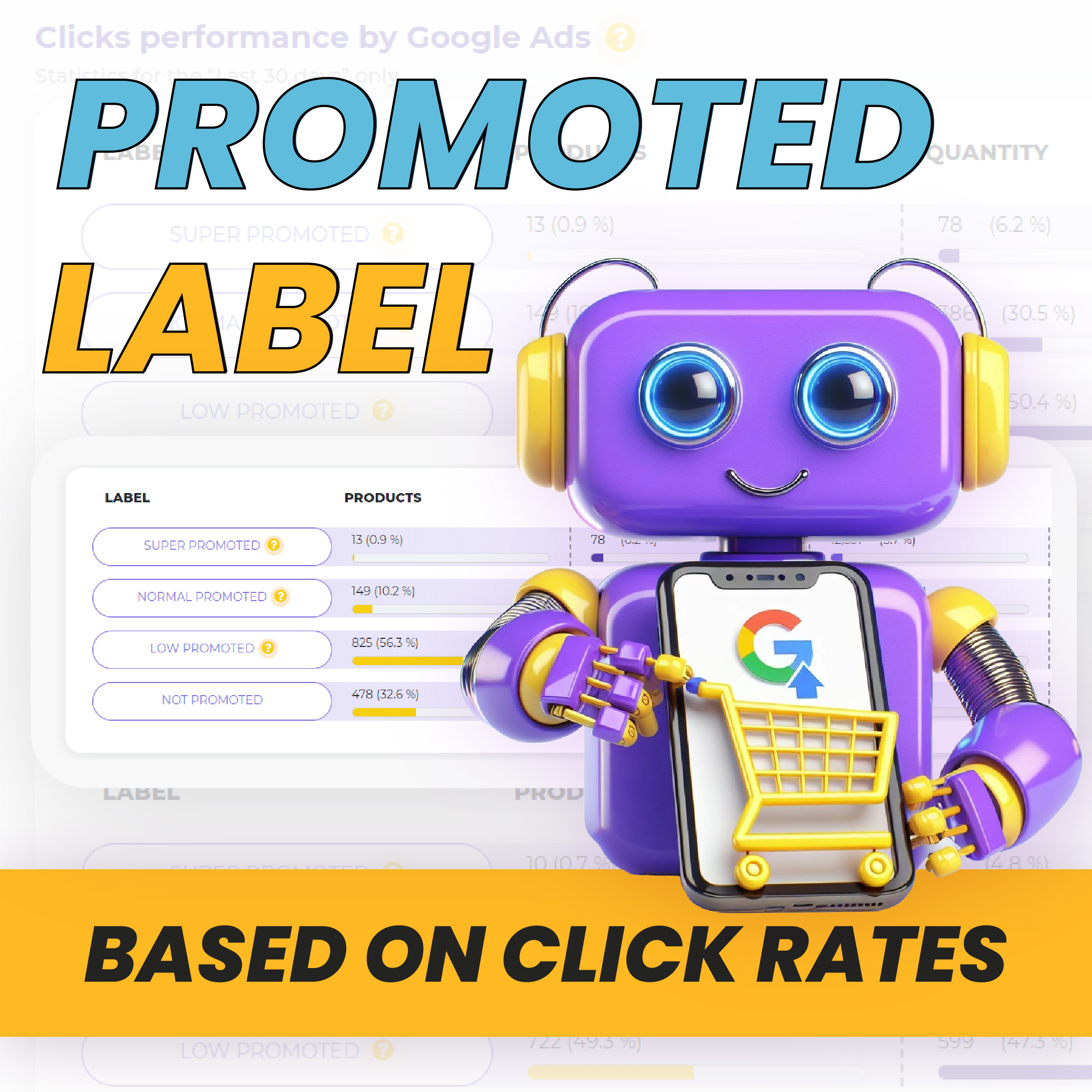Table of Contents
Maximize Your E-Commerce Campaign Performance with the “Promoted” Label
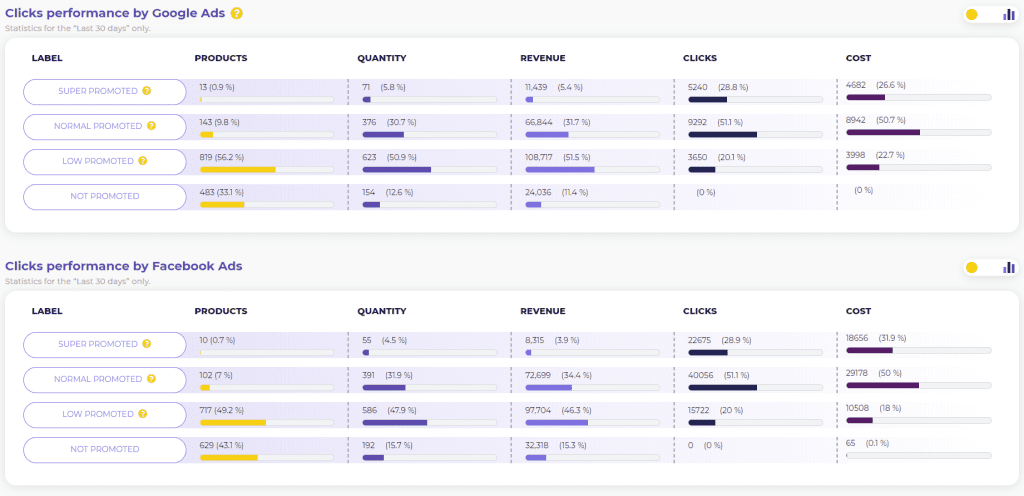

In the world of e-commerce, maximizing product visibility and performance is crucial for your business’s success. With the help of TRUDA, you can benefit from an intelligent product labeling strategy to direct your resources towards areas with the highest potential for success.
One of the key labels that TRUDA offers is “Promoted,” which allows you to group and label products based on the number of clicks they have generated in the last 30 days from Google and Facebook platforms. This labeling helps you identify and act upon products that have had the greatest impact in attracting customer attention.
How Does “Promoted” Labeling Work?
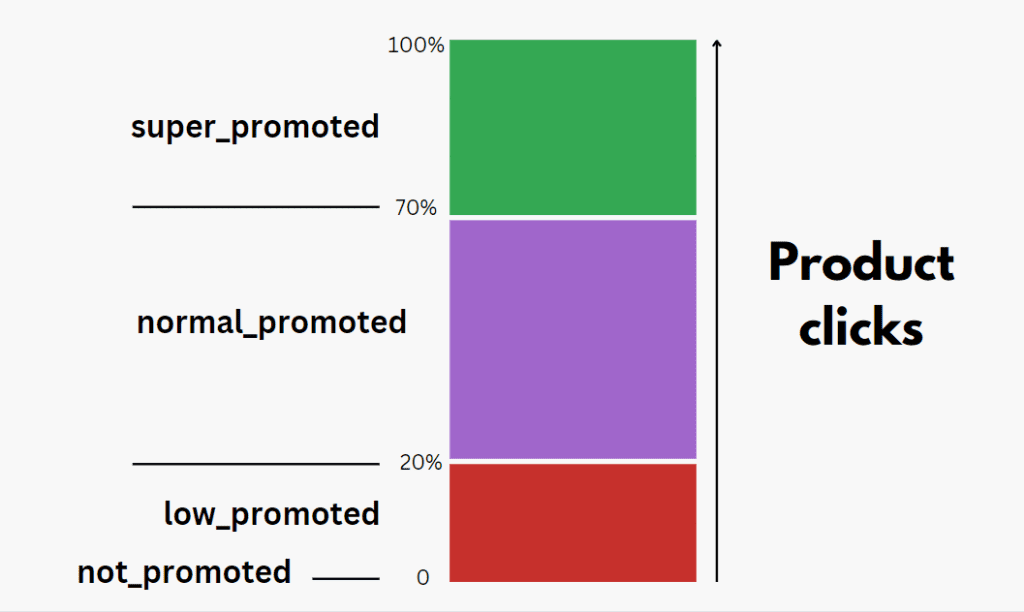

The labeling formula is based on the descending order of products by the number of clicks and comparing their value to the total sum of all clicks within the specified period. Thus, products are divided into four distinct categories:
- Super Promoted: Products with the highest number of clicks, indicating a high level of user interest.
- Normal Promoted: Products that have generated an average number of clicks, representing considerable attraction for customers.
- Low Promoted: Products that have had a low number of clicks, suggesting lower visibility or a need for optimization.
- Not Promoted: Products that have not generated any clicks within the specified period.
This approach allows you to quickly identify products that require increased attention and to allocate resources intelligently to maximize the impact of your marketing campaigns.
Benefits of Using the “Promoted” Label
- Flexibility in Managing Marketing Strategies: By grouping and labeling products based on the number of clicks, you can quickly adapt marketing strategies to fit customer requirements and preferences.
- Smart Resource Allocation: Identifying products with the highest potential for success allows you to allocate resources efficiently, maximizing ROI and the effectiveness of your advertising campaigns.
- Improving Campaign Performance: By focusing efforts on promoted products and optimizing them, you can significantly improve the performance of your marketing campaigns.
Example Campaign Budget with the “Promoted” Label:
For example, suppose you have a total marketing budget of $10,000 for your e-commerce campaigns. With the insights provided by the “Promoted” label, you may choose to allocate 60% ($6,000) of your budget to “Super Promoted” and “Normal Promoted” products, focusing on maximizing the visibility and performance of these high-potential items. The remaining 40% ($4,000) could be allocated to “Low Promoted” and “Not Promoted” products, aiming to optimize their visibility and potentially increase their performance through targeted marketing efforts. This balanced approach ensures that you make the most of your budget while strategically promoting products across different performance tiers.
Combining “Promoted” Label with “Revenue” Label in Campaigns
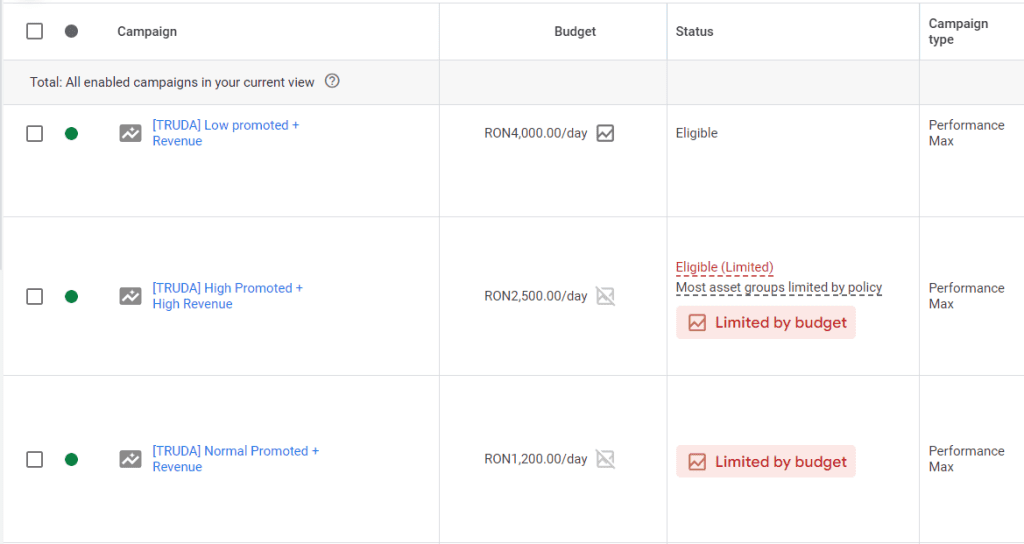

An effective marketing campaign requires a holistic understanding of both the promotional performance and revenue-generating potential of products. By integrating the insights provided by TRUDA’s “Promoted” label with its “Revenue” label, businesses can craft strategic campaigns that optimize both visibility and profitability.
When combining these labels, businesses can tailor their advertising efforts based on the performance of products in different segments. For instance, products labeled as “Super Promoted” or “Normal Promoted,” indicating high click-through rates, can be paired with the “High Revenue” segment from the “Revenue” label. Allocating a significant portion of the budget to promote these high-performing products can amplify their success and drive further revenue growth.
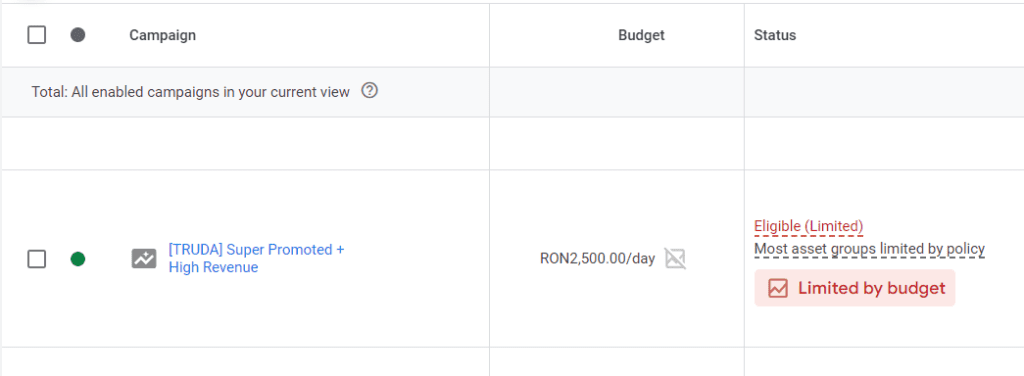

Similarly, products categorized as “Low Promoted” or “Not Promoted” may be paired with the same segments as above: “High Revenue” or “Average Revenue” from the “Revenue” label. This strategy focuses on products which generated Revenue from other sources, but weren’t included in high budget campaigns or in any campaign at all.
By strategically combining the insights provided by both the “Promoted” and “Revenue” labels, businesses can fine-tune their campaign architectures to target the right products with the right promotional strategies. This integrated approach not only enhances the effectiveness of marketing campaigns but also fosters sustainable growth and success in the competitive e-commerce landscape.
You can also add more labels to your strategy, such as the Price Range Label, and combine them all to achieve an even more targeted optimization.
Labeling products based on the number of clicks with the “Promoted” label offers an efficient way to manage marketing strategies and maximize the performance of your e-commerce campaigns. Smart resource allocation and rapid adaptation to market changes will allow you to differentiate yourself and strengthen your position in the market.
With TRUDA and the “Promoted” label, you can make informed decisions and focus your efforts on the areas that matter most for your business’s success.

